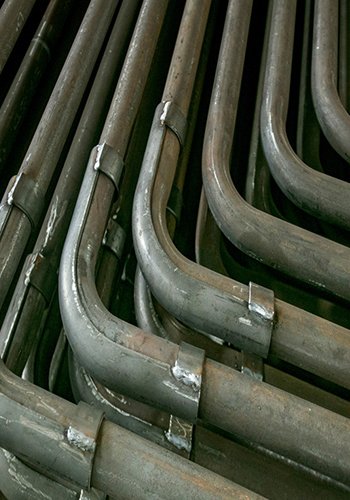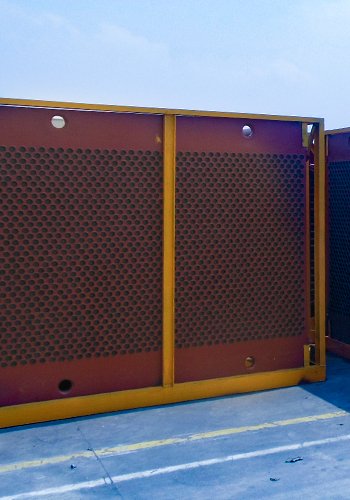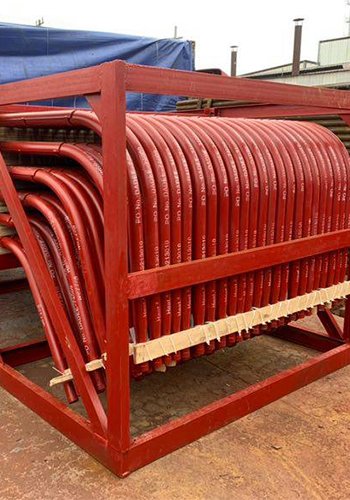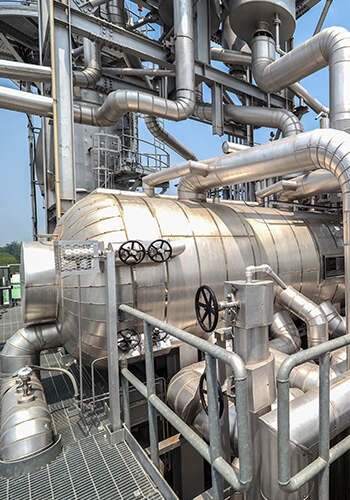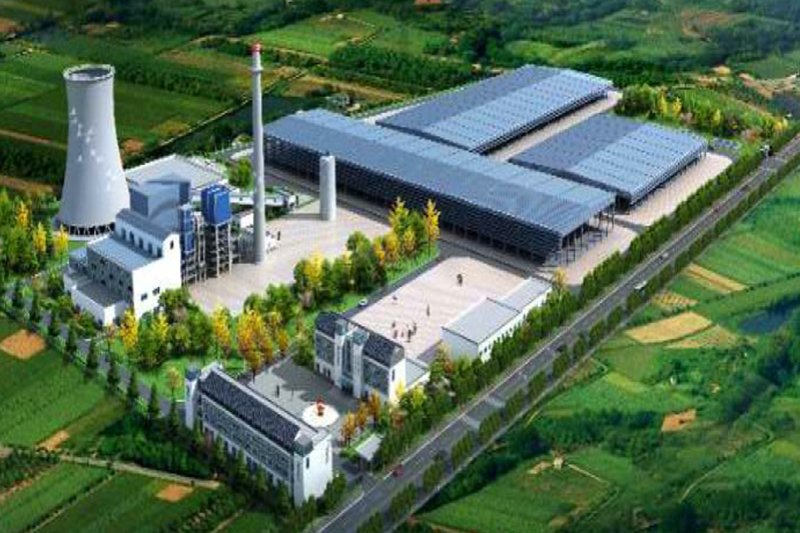In the present phase of circulating fluidized bed boiler (CFB Boilers) operation, there exists a compelling need to elevate the comprehensive utilization of the boiler. This necessitates a forward-looking approach that encompasses the integration of diverse combustion technologies, addressing prevailing challenges within the boiler system. By orchestrating these advancements, the overarching objective is to holistically augment the efficiency of combustion operations. This initiative is underpinned by a dual focus on mitigating safety hazards and rectifying latent issues. Through these concerted efforts, a robust framework is established to propel industrial progress and ensure a safeguarded trajectory of growth.
1 Introduction to CFB Boilers
The circulating fluidized bed (CFB) boiler stands as a groundbreaking innovation in the realm of energy conservation and environmental responsibility, offering a viable alternative to conventional boiler manufacturing. Distinguished by its expansive adaptability, the CFB boilers boasts commendable actual combustion efficiency and facilitates straightforward maintenance procedures. This adaptability extends to the uncomplicated and versatile retrofitting into existing power plant infrastructure, eliminating the need for extensive equipment overhauls. Consequently, the CFB boilers presents a compelling case for superior operational and economic merits.
Furthermore, the CFB boilers readily accommodates low-temperature combustion, a feature that warrants attention. During this phase, a chemical reaction unfolds within the furnace, culminating in intensified combustion efficiency. The heightened chemical interaction ensures the complete incineration of combustion materials, effectively curtailing heat loss and expediting the heat transfer process. It is noteworthy, however, that the furnace’s internal temperature during low-temperature combustion remains notably lower than that of conventional ash furnaces.
Leveraging the combustion capabilities of CFB Boilers yields a measured advantage. The inherently deliberate reaction rate of these boilers contributes not only to the augmentation of combustion efficiency but also to the meticulous utilization of resources. Consequently, the CFB boilers distinguishes itself through its prominent attributes and inherent advantages, particularly in the context of sulfurized combustion processes.
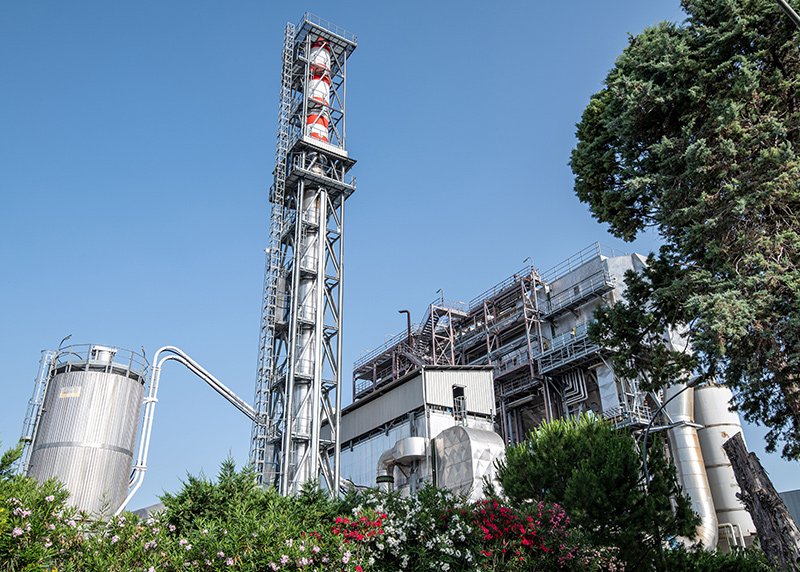
2 Challenges in Circulating Fluidized Bed Boiler (CFB Boilers) Operations
Throughout the operational trajectory of circulating fluidized bed (CFB) boilers, an array of challenges inevitably arises, exerting influence over both boiler efficiency and product quality. These challenges emanate from the intricate interplay of coal-related variables and pose a cumulative effect on the CFB boiler’s performance. Over time, the internal pipeline surfaces encounter erosion and abrasion, attributed to coal-related limitations. Consequently, this deterioration contributes to the emergence of coking issues within the CFB hearth, presenting a multifaceted predicament. The repercussions extend to pivotal components like the wind separator and slag cooler, where discernible operational disturbances transpire. These intricate factors coalesce to precipitate potential incidents such as pipeline explosions and leakages in the boiler’s pressure components. Notably, substantial leakages within the wind separator are also observed, accentuating the gravity of the situation. Concurrently, the buildup of coal ash may lead to severe blockages, exacerbating the situation further. In instances where the coal ash content within the hearth exceeds stipulated thresholds, an elevation in the boiler’s temperature occurs, culminating in overheating phenomena. These challenges collectively exert a significant toll, undermining both the reliability and economic viability of the boiler. Addressing these issues represents a critical imperative for advancing the present state of CFB Boilers technology, heralding a substantial enhancement in operational efficiency and overall performance.
3 Enhancing Operating Efficiency in CFB Boilers: Methodological Analysis
During the combustion phase of circulating fluidized bed (CFB) boilers, coal combustion unfolds through distinct stages, each characterized by varying temperatures within the furnace. The temperature dynamics play a pivotal role in dictating the efficacy and relevance of coal combustion, which in turn significantly influences the operational efficiency of CFB boilers.
The optimization of coal combustion hinges upon a multiplicity of factors, including the temporal progression of combustion and the inherent coke content within the coal constituents. Coal resources’ combustion duration finds correlation with the presence of coke elements. Specifically, coal resources exhibiting higher volatile fractions deliver heightened post-combustion heat, subsequently leading to a gradual reduction in residual coke content. Consequently, the diminished cohesion of coke elements amplifies the time frame of coke combustion.
Moreover, the effective utilization of coal resources with lower content of volatile molecules becomes pertinent in instances characterized by elevated moisture or ash content during the combustion process. Here, a conscientious approach is paramount to ensure resource combustion efficiency. The augmentation of coal resource heat generation serves as a pivotal conduit for resource optimization. This not only curbs the pace of heat loss intrinsic to CFB Boilers but also mitigates equipment wear and tear.
It is worth noting, however, that this approach is not devoid of challenges. The enrichment of coal resource heat generation inevitably culminates in a substantial ash yield. This, in turn, poses considerable complexities and impediments to the downstream processing endeavors of enterprises.
In light of these considerations, a nuanced and balanced strategy must be formulated, one that maximizes coal combustion efficiency while judiciously navigating the concomitant challenges posed by augmented ash production. This strategic equilibrium is pivotal for fostering efficient and sustainable operating practices in CFB Boilers.
3.1 Enhancing Operating Efficiency through Wind and Coal Volume Adjustment in Boiler Operations
In the pursuit of optimizing circulating fluidized bed (CFB) boiler operations, meticulous attention to the adjustment of primary and secondary air volumes, coal feed rates, bed temperature, and circulating material concentration is paramount. These parameters collectively define the operational envelope within which the boiler functions optimally.
Current research and surveys underscore a conclusive correlation between operational efficiency and a well-founded theoretical framework. Notably, a primary air volume to secondary air volume ratio of 6:4 or 7:3 has emerged as the most judicious configuration. Deviation from this ratio, such as a balanced 5:5 air volume ratio, can potentially lead to undesirable temperature spikes in the dense-phase zone. To ensure the secure and economically viable functioning of the CFB Boilers, operators must be vigilant in managing and refining the air volume ratio. During operations at 50% load, the secondary fan can be idled, culminating in substantial power resource conservation.
Efforts to curtail smoke losses during combustion necessitate precise control of key parameters. To this end, maintaining flue gas oxygen content between 4% and 5.5% proves pivotal. The differential pressure across the material layer must be sustained within a 10,000 Pa range, while internal furnace pressure variance ought to hover within 800 to 1,000 Pa thresholds. The adherence to these parameter benchmarks significantly elevates the CFB boiler’s operational efficiency and bolsters load control capabilities. This approach also yields a combustible content reduction in fly ash, concurrently preserving the standard parameters during CFB boiler operations. This collective optimization translates into tangible economic gains for enterprises, amplifying their competitive edge.
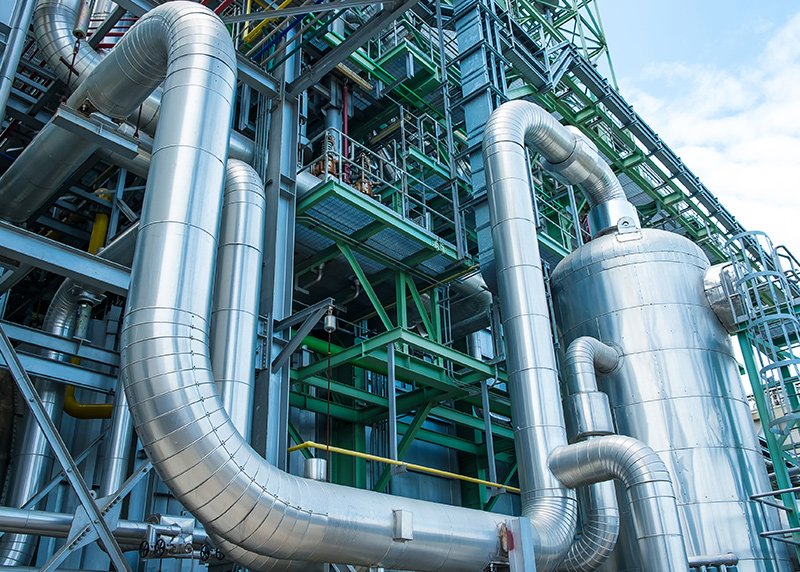
3.2 Elevating Boiler Operating Efficiency via Circulation Rate Adjustment
The attainment of optimal load capacity and a suitably balanced bed temperature within a circulating fluidized bed (CFB) boiler hinges primarily upon the manipulation of circulation rate and material concentration. The successful recirculation of materials back into the boiler interior is pivotal; any hindrance in this process, attributed to either circulatory system malfunction or subpar separation system efficacy, can disrupt normal load ranges.
In typical scenarios, the inability to effectively reintroduce coal ash into the feeder stems from circulatory system complications within the furnace. The intricate circulation of coal ash rests upon the modulation of material concentration and entails the curtailment of dense-phase zone temperatures and circulation multipliers. By regulating these factors, the residual heat can be promptly redirected back into the furnace space. This energy transfer materializes through water-cooled walls and other heated surfaces, thus fostering efficient combustion.
Throughout CFB Boilers operations, a judicious approach encompasses the synchronization of wind parameters and material concentration. This symbiotic adjustment ensures the rationalization of parameters and facilitates the swift reintegration of residual heat within the boiler interior. Consequently, this operational finesse culminates in a virtuous cycle, curbing wear and tear. Addressing issues stemming from inadequate ash circulation necessitates the recalibration of airflow velocity, factoring in the chamber dimensions and the nuanced interplay of warmth and cooling dynamics.
Effecting an optimal velocity adjustment in harmony with the internal furnace conditions propels the optimal functioning of the circulation system. This orchestrated precision ensures the maximization of resource utilization, affording a robust foundation for boiler utilization. In unison, these measures drive an overarching enhancement in the operating efficiency of CFB Boilers, reinforcing their role as a reliable cornerstone within industrial operations.
3.3 Enhancing Boiler Combustion Efficiency
The combustion efficiency of a circulating fluidized bed (CFB) boiler intricately hinges on the interplay of air volume, where the amalgamation of air and coal resources plays a defining role. However, the absolute amalgamation of these elements can be elusive, leading to a discernible impact on the actual combustion process. This discrepancy results in a portion of the air remaining uninvolved in the combustion reaction within the CFB boilers. This unreacted air remains ensconced within the boiler interior, gradually absorbing heat and impinging upon effective heat transfer. Concurrently, this residual air carries away a portion of heat upon leaving the furnace, engendering an incremental heat loss over time.
Empirical data and research have pinpointed a critical threshold: when the supplied air within the boiler surpasses 15% to 20% of combustion requisites, it manifests a tangible impact on flame morphology, flue gas composition, and air-to-combustion ratios. Swift corrective actions are mandated to optimize parameters and content in response.
Strategies to regulate air quality and content prove instrumental in managing combustion efficiency. Real-time monitoring of oxygen content in the boiler interior, facilitated through flue gas analysis, enables the predictive assessment of CFB Boilers combustion efficiency. A precipitous drop of 20% in flue gas oxygen content necessitates a corresponding 1.2% increment in coal resources. By finetuning the balance between coal resource supply and air volume, the combustion efficiency of CFB Boilers can be notably enriched. Although this optimization may transpire gradually, sustained adjustments will assuredly culminate in the effective utilization of coal resources and a marked improvement in overall boiler operational efficiency.
3.4 Advancements in Combustion and Management Control Systems
The integration of modern digital control systems yields a paradigm shift in the precision of combustion air and fuel ratio management within boilers. This transition ensures meticulous adjustment efficacy and quality, mitigating the challenge of data deviations that can precipitate hazardous operational scenarios. Leveraging digital control systems enables a seamless amalgamation with cutting-edge enterprise technology, fostering a dynamic environment for technological innovation and optimization. Notably, this synergy not only curtails fuel losses but also fortifies the agility of boiler load adjustments. This adaptive capability guarantees that the boiler seamlessly accommodates timely load changes, reinforcing the overarching efficiency of coal resource combustion.
The symbiotic relationship between the digital combustion control system and boiler regulation and control system manifests multifaceted benefits. By orchestrating these systems, substantial resource savings are achieved while concurrently magnifying the operational efficiency and quality of the boiler. The assimilation of digital combustion control systems augments precision, minimizing inefficiencies. Concurrently, the boiler regulation and control system harmonizes operational parameters, optimizing the combustion process to realize its fullest potential.
Collectively, this fusion of advanced control systems transcends conventional methodologies, propelling combustion efficiency to new heights. This transformation underscores an all-encompassing enhancement, resonating across the entire spectrum of boiler operations.

3.5 Implementation of Boiler Sequence Control System
As enterprises evolve and encompass multiple CFB Boilers and boiler rooms, a strategic approach involves establishing a robust boiler combustion sequence. This entails a meticulous selection of boilers through scientific assessment, enabling the effective regulation of combustion levels and steam production to ensure adherence to standardized parameters. This orchestrated approach contributes to an elevated mean efficiency and superior quality of boiler operations.
During varying boiler load phases, optimal combustion efficiency mandates a judicious adjustment of diverse variables to maintain rational and scientific ranges. Ordinarily, the highest boiler setting corresponds to peak combustion efficiency, while efficiency tends to decrease at lower settings. The integration of a wind and coal ratio adjustment sequence control system holds potential to exert considerable influence. By governing the number of concurrently operational boilers and elongating their combustion cycles, this system perpetuates boilers operating at peak settings, thereby significantly enhancing combustion efficiency. This approach effectively curtails subsequent resource losses and obviates wastage concerns, translating into an overarching augmentation of enterprise economic efficiency.
3.6 Enhancing Water-Cooled Wall Tube Durability
In the pursuit of refining combustion operations within CFB Boilers, an imperative facet involves augmenting the resilience of water-cooled wall pipes. This endeavor, in turn, contributes to a discernible elevation in combustion efficiency. During the optimization process, the utilization of materials boasting high temperature, high pressure resistance, and corrosion resilience for pipe construction is pivotal. Building upon this foundation, the mitigation of water-cooled wall wear hinges upon a strategic amalgamation of materials and electric spraying techniques, fostering a comprehensive improvement in wear-related concerns.
The arc spraying method emerges as a potent contender in this realm, distinguished by its favorable thermal conductivity and hardness attributes, aptly aligned with the demands of boiler combustion. Even when employed in thin layers, this technique catalyzes a significant enhancement in the overall quality of water-cooled walls. The current trajectory of technological innovation and development within water-cooled wall transition further amplifies the efficacy of spraying methodologies. By leveraging spraying construction techniques, an array of issues can be effectively addressed and ameliorated within the context of water-cooled walls. Typically, this approach involves seamlessly integrating sprayed barriers within the internal water-cooled wall pipe, thereby obviating any uneven surface disruptions. The utilization of mechanical welding to accomplish this feat garners commendable results, demonstrably elevating operational efficiency and effectiveness.
In essence, the enhancement of water-cooled wall durability fortifies the core infrastructure of CFB Boilers, rendering them more robust and resilient in the face of operational demands. This strategic elevation intersects with the broader goal of augmenting overall combustion efficiency within these boilers.
3.7 Mitigating Furnace Coking Challenges
The emergence of localized low-temperature coking within the furnace, characterized by temperature irregularities in the ash, necessitates strategic interventions to enhance combustion efficiency in CFB Boilers. The mitigation of such coking-related issues mandates a systematic approach encompassing granular mixture adjustments to ensure homogeneity, as well as temperature management to establish equilibrium within the material.
The normal course of circulating fluidization can precipitate coking problems. If the carbon content within the fluidized bed exceeds prescribed standards, it poses a tangible detriment to combustion efficiency and quality. In response, diligent investigation by relevant personnel is crucial, underpinning the effective execution of remediation efforts. Informed decisions must be anchored in pertinent data. In instances of acute coking scenarios, immediate cessation of combustion and timely elimination of coking sites becomes imperative. This preemptive measure precludes residual coke obstruction from impeding circulating fluidization boiler operations, thereby diminishing the potential for safety hazards and latent issues.
By addressing furnace coking complications methodically and proactively, a conducive environment is established for sustained combustion efficiency and boiler operational quality.
4 Conclusion
In conclusion, the operational efficiency of CFB Boilers is influenced by a multitude of factors. Navigating the intricacies of boiler optimization necessitates a vigilant approach from relevant personnel. Timely identification of potential failure points, coupled with adept adjustments and enhancements, forms the cornerstone of optimizing the combustion operational efficiency of these boilers. This pursuit is fortified by a steadfast commitment to resource maximization, ultimately laying a robust foundation for industry advancement and assurance.
[Source] Tan Chungui, Methods to improve the operating efficiency of circulating fluidized bed boilers, China Petroleum and Chemical Standards and Quality 2023[11]:16-18
DHB Boiler
Discover The Superior Quality And Cutting-Edge Technology Of DHB Boilers. Explore Our Range Of Biomass Boilers, Waste Heat Boilers, And More. Take Your Industrial Operations To New Heights With DHB Boiler.
